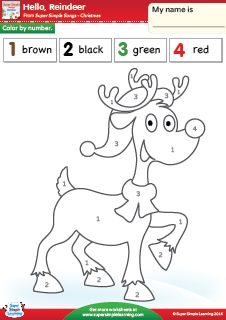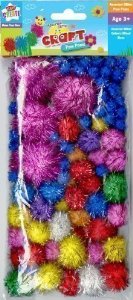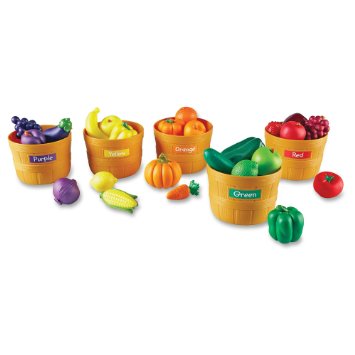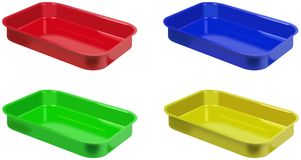There are loads of cute worksheets for teaching colors to ESL students, even for young learners. You can find these for every context imaginable…
… like this introductory color-the-crayons activity, available for free on Teacherspayteachers.com.

… like this monster-themed coloring activity that incorporates early reading, available from churchhousecollection.com.

… like this Christmas-themed color-by-numbers that provides a great review of numbers, available from Super Simple Learning.

… or, like this reading activity that incorporates coloring for comprehension, available from The Moffatt Girls.

But what do we do when our students are too young for these activities? Even if kids are too little to hold a crayon, they still understand the concept of different colors and can start learning their names!
Colors are the easiest beginning lesson for very young learners because they will, for the most part, have developed this concept in their mother tongue. Here are five short activities that will engage your students while you teach them colors.
Color flashcards

Almost every colors lesson can start here: teach the students the colors on the cards. This is as easy as laminating some construction paper, and you can make it as fun as finding your favorite cartoon character in different colors. It’s great to use the words along with the colors, but it might be preferable to use solid color flashcards at the beginning so that they don’t confuse the object and the color (otherwise, you might have students calling all apples red).
For two- and three-year olds, you can start with only four colors and gradually build in more over the coming lessons.
Craft pom poms

Pom poms are great to teach colors because young students love them! You can put them inside a box, inside plastic eggs (like those you find at Easter), blindfold the students and get them to grab a handful before telling you the colors, or even ask them to pick one out of a bunch based on color. They are a great teaching tool!
Be sure to use only the bigger pom poms and watch children closely, as these can be a choking hazard!
Colored tablecloths

You can use a plastic colored table cloth for a hundred different things in preschool! For teaching colors, you can ask the students to point to a color, place a favorite toy on different colors, tell them to put different hands and feet on a color (even practice left and right for advanced students!), have students tell each other which color to touch, match objects to the colors on the table cloth, etc.
The possibilities are endless! In Spain, you can buy a variety of fun plastic table cloths called hule by the meter at discount shops. Invest 10€ into a few different ones and incorporate them into your classroom routine!
Sorting Games with Plastic Food

Learning Resources makes a fantastic fruit and veg sorting game available around the world on Amazon. But you can use any plastic food game – or, if you are brave, real fruits and veg – to practice sorting in your class. Just make sure that students are repeating the colors before sorting.
A great active game with sorting is to put a pile of fruit and veg at one end of the room and colored trays or buckets at the other end. You call out a color and the students race to grab a food that color, then put it in the correct place. If something like the game pictured above isn’t in your budget, you can use these c0lored teaching trays that you probably already have in your arsenal:

Fishing for Colors Game

We’ve used homemade fishing sets to practice numbers with great success, but you can make them with colors to give your students even more variety!
Here’s a great post on how to make your own fishing set. We simply used two wooden dowels, string tied around a square magnet (similar to how you would wrap ribbon around a gift so that it stays put!), and paper clips on cardboard fish.
And there you have it! Five fun activities to help your very young ESL students learn and practice colors.